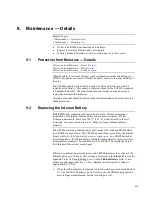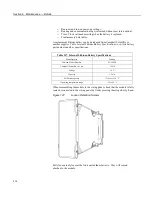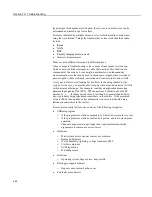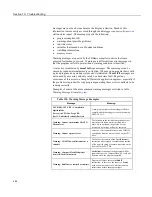
Section 8. Operation
8.11.3.3 TCP/IP Instructions
The following CRBasic instructions that service CR1000 IP capabilities have
provisions for password protection:
•
EMailRecv()
•
EMailSend()
•
FTPClient()
8.11.3.4 Settings — Passwords
Settings, which are accessible with
DevConfig
(p. 111),
enable the entry of the
following passwords:
•
PPP Password
•
PakBus/TCP Password
•
FTP Password
•
TLS Password (Transport Layer Security (TLS) Enabled)
•
TLS Private Key Password
•
AES-128 Encrypted PakBus Communication Encryption
(p. 471)
Key
See the section
Status, Settings, and DTI (Registers
(p. 114))
for more information.
8.11.4 File Encryption
Encryption is available for CRBasic program files and provides a means of
securing proprietary code or making a program tamper resistant. .CR<X> files, or
files specified by the
Include()
instruction, can be encrypted. The CR1000
decrypts program files on the fly. While other file types can be encrypted, no tool
is provided for decryption.
The
CRBasic Editor
encryption facility (
Menus
|
File
|
Save and Encrypt
)
creates an encrypted copy of the original file in PC memory. The encrypted file is
named after the original, but the name is appended with "_enc". The original file
remains intact. The
FileEncrypt()
instruction encrypts files already in CR1000
memory. The encrypted file overwrites and takes the name of the original. The
Encryption()
instruction encrypts and decrypts the contents of a file.
One use of file encryption may be to secure proprietary code but make it available
for copying.
8.11.5 Communication Encryption
PakBus is the CR1000 root communication protocol. By encrypting certain
portions of PakBus communications, a high level of security is achieved. See
PakBus Encryption
(p. 406)
for more information.
8.11.6 Hiding Files
The option to hide CRBasic program files provides a means, apart from or in
conjunction with file encryption, of securing proprietary code, prevent it from
being copied, or making it tamper resistant. .CR<X> files, or files specified by
the
Include()
instruction, can be hidden using the
FileHide()
instruction. The
CR1000 can locate and use hidden files on the fly, but a listing of the file or the
471
Summary of Contents for CR1000
Page 2: ......
Page 4: ......
Page 6: ......
Page 32: ......
Page 36: ......
Page 38: ......
Page 40: ......
Page 60: ...Section 4 System Quickstart Figure 16 PC200W View Line Graph 60 ...
Page 96: ......
Page 98: ...98 ...
Page 302: ......
Page 453: ...Section 8 Operation Figure 115 Using the Keyboard Display 453 ...
Page 456: ...Section 8 Operation Figure 118 Real Time Custom 456 ...
Page 457: ...Section 8 Operation 8 8 1 3 Final Memory Tables Figure 119 Final Memory Tables 457 ...
Page 458: ...Section 8 Operation 8 8 2 Run Stop Program Figure 120 Run Stop Program 458 ...
Page 460: ...Section 8 Operation Figure 122 File Edit 460 ...
Page 461: ...Section 8 Operation 8 8 4 PCCard Memory Card Display Figure 123 PCCard CF Card Display 461 ...
Page 478: ......
Page 506: ......
Page 536: ......
Page 636: ......
Page 642: ......
Page 644: ......
Page 676: ......
Page 677: ......
















































